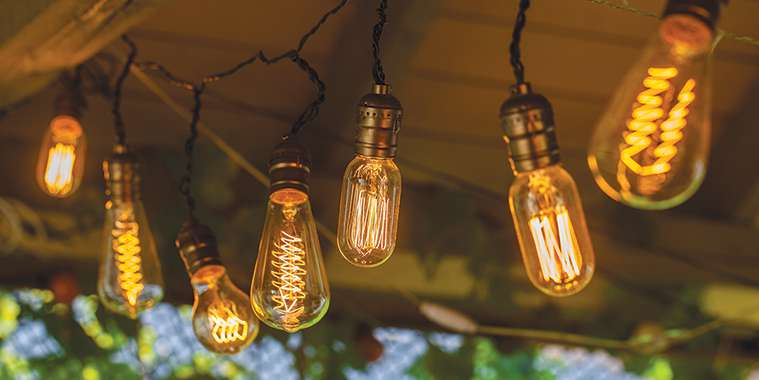In last week’s article about electrical, we investigated the safety, detection and maintenance of aging wiring in older homes, but what about newer builds?
With modern demand for new homes and even greater pressure on builders to quickly get those homes move-in ready, it’s inevitable — even with inspections — for mistakes to get overlooked. From loose connections to downright shoddy distribution, here’s what you should know about electrical in your new home.
What to look for
It’s a good idea when buying a new(er) home, to ask for an electrical inspection report. An electrical inspection is standard for all new builds before closing-in the wiring, and a good idea when placing a home on the market — even if it is still relatively new.
That’s all well and good, but what if you’ve already moved in? Master electrician, Jeff McLaughlin says although not all errors are code violations, there are a number of common issues to be aware of:
• Loose connections in fixtures, junctions and outlets: These can create hotspots and snapping or fizzling sounds when plugging in small appliances and electronics or flipping light switches. Another symptom of this issue is the odour caused when wire insulation overheats.
• Loosely attached fixtures, junctions or outlets: If the boxes themselves are not securely fastened, the interior connections will eventually loosen, even if they’re tight to begin with.
• Reversed polarities: While light switches with the on and off positions reversed are mostly harmless—though exceedingly annoying!—swapped polarities can become dangerous when it comes to outlets, especially when appliances are involved.
• Worn receptacle contacts: While this generally occurs in older homes, this can still happen with newer equipment, causing plugs to slip out of the receptacle, creating an arc risk.
• GFCI outlets are not used: This is a code violation, as all new builds must include ground fault circuit interrupter outlets in the garage, outdoor outlets or within four feet (1.22 m) of a sink or tub.
• Breakers that trip constantly: This could be an indicator of a short circuit. Keep the affected circuit breaker in the off position and call a certified electrician as soon as possible.
• Split kitchen circuits: Modern guidelines require each kitchen circuit to be dedicated. An example of what to look for is dimming lights when your refrigerator’s compressor starts up—this is a sign your fridge receptacle is not on a dedicated circuit.
• Uncovered junction boxes: This code violation can easily be remedied by replacing the cover plate, and only becomes a serious hazard if the wires are bare or within easy reach.
• Circuits spread across multiple floors: Although it’s common to group multiple fixtures and outlets to a single circuit on the same floor, spreading a single circuit across multiple levels of the home quickly becomes problematic.
It’s advisable to do an annual check of your home’s electrical to make sure all your connections are in good standing and prevent loosening or wear of connections and receptacles. You can do this by removing the covers on your receptacles, switches and junctions.
Safety first! Be sure to turn off each circuit at the breaker and use a flashlight to avoid the risk of electric shock. If you’re at all uncertain, contact a professional.
Insurance and warranty matters
The silver lining regarding unsavoury discoveries in your newly-built home is most home builders offer warranty periods after completion. Be sure to reach out to them before contacting an electrician. Having the work done by someone else could void your warranty!
You may also be wondering if poorly installed electrical can affect your home insurance. Josh Hansen of Mitchell and Whale Insurance Brokers Ltd. shares his insights.
Hansen reveals one possible scenario is, “if a loss occurs and faulty wiring was deemed to be the root cause but the wiring was not to code, the insurance company would likely sue the building inspector that approved the wiring that was not to code and/or the certified electrician who installed the wiring to recuperate their losses. This practice is known as subrogation.”
A second scenario, Hansen mentions, can result in the voiding of your insurance coverage altogether. This happens when you perform the work yourself and it’s not certified by a building inspector. Unless you yourself are an insured master electrician, it’s generally best to leave this type of work to the professionals.
Where can I find electrical or building code information for my province?
In Canada, the regulation and application of safety codes falls to the provinces and territories, and some municipalities may also apply their own additional guidelines, so be sure to check with them as well.
In Manitoba you can go to www.hydro.mb.ca/accounts_and_services/permits_and_inspections/codes_and_standards to help answer any questions you may have. Or contact a qualified electrician directly. Which brings us to our next point.
Always hire a professional
You can never be too safe when it comes to dealing with electrical systems, as even small errors can have devastating consequences. That’s why it’s always a good decision to seek professional help, even for annual checks and simple maintenance. McLaughlin advises it’s best to use a master electrician, who must be certified and fully insured.
There’s a lot to take in, but knowing what to look for in your new home, or when hunting for your dream home, is the best way to ensure a safe and healthy space for you and your family for many years to come.
— Realtor.ca



